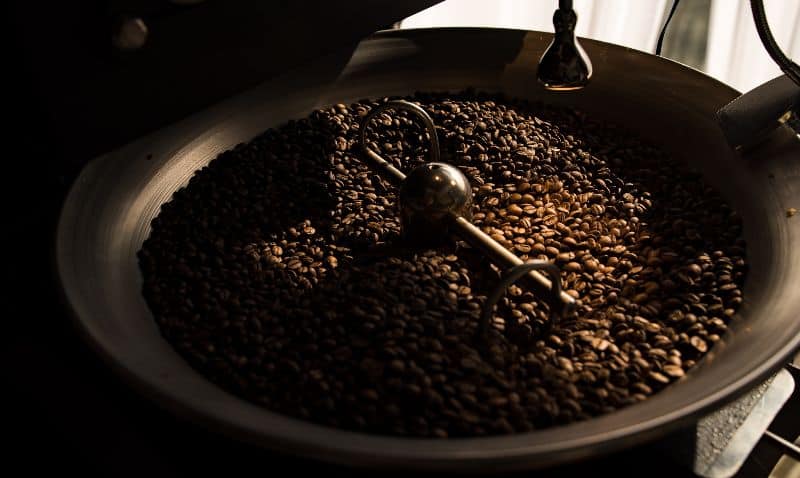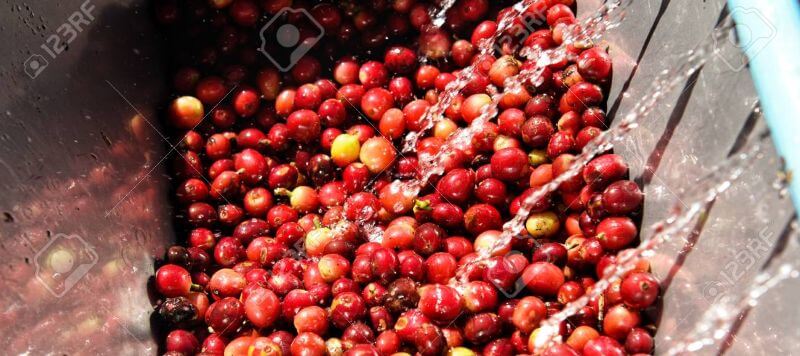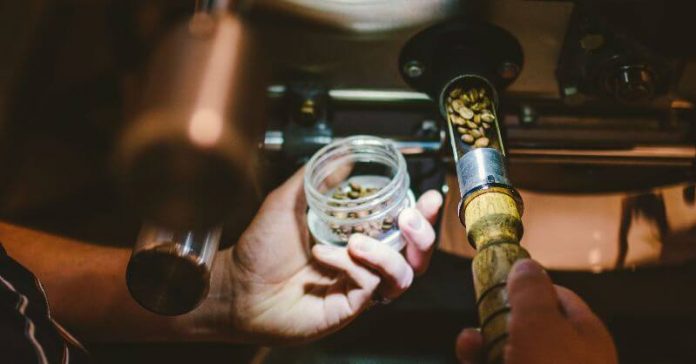How Coffee Is Roasted and Processed Know The Details Of The Procedure. If you want to know about how the process of roasting works, this is the article that you must read. Take a deep dive into the roasting process and you will be sure to learn a lot.
Roasting coffee is a process that involves heating, which turns coffee into dark brown, fragrant beans we recognize and like.
Roasting coffee makes it gives out a flavor and aroma which is hidden in the green beans. The coffee beans are stored in a green state since, in this state, they cannot lose taste or quality. A green coffee bean has very different characteristics compared to a roasted bean; it is spongy and soft to the bite and has a glassy smell.
The roasting process involves chemical changes since the coffee beans are brought to extremely high temperatures. When they get to the final state of perfection, they are then quickly cooled to halt the procedure. Roasted seeds have a smell similar to coffee, and have less weight since the moisture has been eliminated. They are crispy when you bite, ready to be brewed and ground. However, once the coffee gets roasted, it should be immediately used before the fresh roast flavor starts to weaken.
Roasting Coffee Is Both a Science and an Art

It takes a couple of years of learning and practicing to become an expert roaster with the capability to “read” the beans and make choices with instant timing. The main difference between a ruined batch and perfectly roasted coffee can be a concern of a few seconds.
Identify Your Roasts
Many roasters have focused on titles for their favorite roasts, and there is less industry normalization. This can lead to confusion when you are purchasing, but generally, roasts fall into one among four categories- dark, medium-dark, medium, and light. If you want to experience different flavors of coffee beans, try the beans from Lavazza in UAE.
Dark Roasts
Dark roasts produce glossy black beans with a greasy surface and a distinct unpleasantness.
Medium-Dark Roasts
These roasts are rich, with a dark color, and have an oily surface with a slightly bittersweet taste.
Medium Roasts
This is a medium brown-colored roast with a non-oily surface and a more robust flavor.
Light Roasts
This roast is brown and is usually favored for the minor coffee varieties. They do not have an oily surface since they are not yet roasted for a long time enough for the oils to break onto the surface.
Roasting Coffee
Being a seed and an agricultural product, coffee must be roasted to make it ready for consumption. The process uses time and heat to turn the raw and green seed into a black or brown coffee bean. Typically, the roasting process lasts between ten to fifteen minutes and passes through several chemical reactions to impart aromas and flavors to the final product. The lighter roasted coffees will own more ‘terroir’ notes like fruit, berry, and floral tea. The darker roasted coffee will be bittersweet chocolate and smoky.
As the roasting process proceeds from light to dark, the features of the coffee will fluctuate. For instance, in the case of sweetness, a lightly roasted coffee will start with sugarcane, proceed to raw sugar, caramel, and then to maple syrup.
In the art of roasting coffee, roasters put their single sip of coffee. On the other hand, in the science of roasting, the roasters attempt to repeat their procedure, fight variables, and make a consistently good product for your consumption.
What Are the Methods of Processing Coffee Beans?

Depulping
After the coffee has been grown and picked from the farm, it must be processed to do away with the outer skins of the coffee bean. The methods of processing are unique despite the part where the coffee crop is grown. The two main ways of processing are natural and washed methods. The washing method of processing coffee is mostly used in areas where there is the availability of plentiful water.
The coffee cherry is picked, and then a mechanical process is involved in removing its outer layer. This discloses a sticky and sweet layer called the pulp. During this processing stage, the pulp is either eliminated by a depulper or released into a fermentation chamber where some bacteria, natural enzymes, and other microbes reduce it.
Washing
Next, the coffee is washed mainly using water (or, less regularly, in its juices), and the mucilage left behind is eliminated, enlightening the parchment. At this particular point, the coffee can be dried, and both sun drying and mechanical techniques are involved. Once the coffee is dried to a proper level, it is then hulled to eliminate the parchment, exposing the greenish-blue seed and the silver layer.
The appropriately washed coffee will tend to be a bit bright, with delicate fruit notes, and consistent color and taste. It will have less depth of the body compared to the same coffee processed using a natural method but stands a greater opportunity of being constant bean to bean and therefore cup to cup.
Natural Processing
As its name suggests, the natural process is a natural procedure of producing coffee, dating back to the initial commercially manufactured coffee beans for the Ottoman Empire from Yemen. Rather than picking coffee, washing, and pulping, the cherries are just picked from the crop and kept on a drying bed. When the coffee cherry gets dry, it is easily stripped off, and only the bean is left behind.
The coffees processed using this method are inconsistent compared to coffees produced using the washed process and can experience quality issues if not correctly sorted. Even so, they have a subtle tartness that we can identify as berry or fruit while they rage acidity. Also, they result in impropriety and body in a coffee that can be alleged in complexity and in-depth. Natural coffee that has been improperly processed has an almost sour wine-like, fermented taste.
Conclusion
When receiving coffee, it has been changed from a raw seed into a substance that fuels our lifestyles, build a social atmospheric condition, and provides enjoyment to many people in the day to day life. The new experiences let you get to taste coffee, evaluate, and entirely enjoy the masterfully manufactured coffees that reach your home.
Not only will you have a stronger, more potent and more flavourfull coffee, but you can also enjoy it for longer because the process of roasting allows the coffee grounds to be stored and used for a longer period of time. Though it might seem like a big step, but a coffee roasting machine is something that can help you make the best coffees.
Make the art of each bean that gets on your hands and try to know how to brew and learn the science and art of coffee.




